Posts: 15,307
Threads: 532
Joined: Oct 2011
City: Jackson, NJ
This set was bought about.....4 or 5 years ago.
I am not a big fan of this period but I wanted a set with FM. And the price was not bad, maybe $85 with local pickup.
I am questioning the need to have it now as the Grundig has just filled that niche, but it is there, it needs restoration, so.....
Today was the "take apart" day.
I have to say, it is not very convenient, taking apart the sets with vertical chassis mount at an angle.
Especially the last bolt that has about 1.5" of space around it and has to be taken out with a socket wrench, that makes 1 click per iteration.
Anywho.
It is very clean. And! It seems there is no rubber wiring, or at least there is no crumbling one.
There is a couple of wooden pieces that probably unglued themselves from somewhere, which I will try to find out later.
Q1: There is unconnected part attached to one of the wooden risers. Not sure what it is; could probably search but hey! it is a Philco Phorum so methought, why don't I ask first?
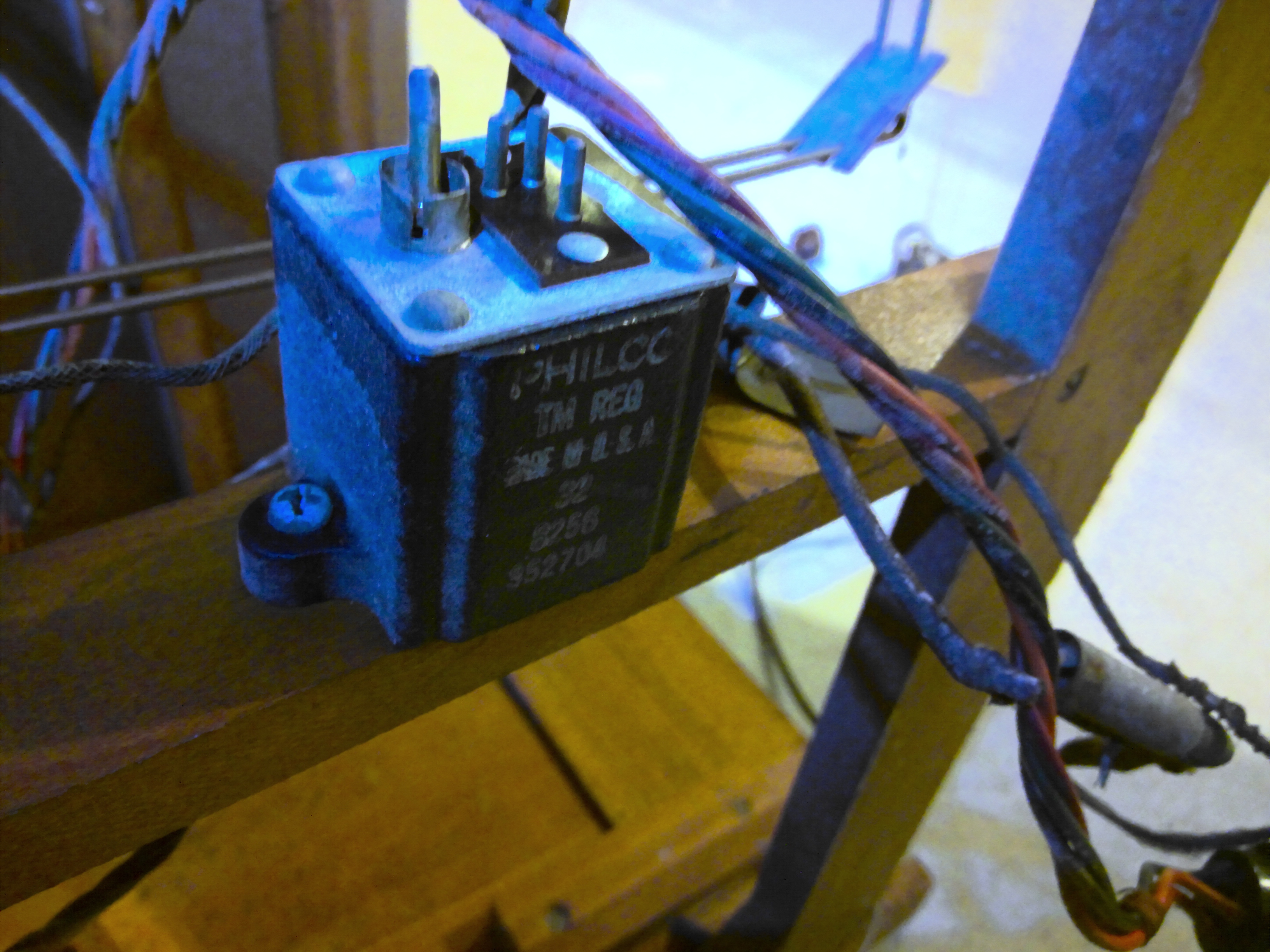
Now the radio.
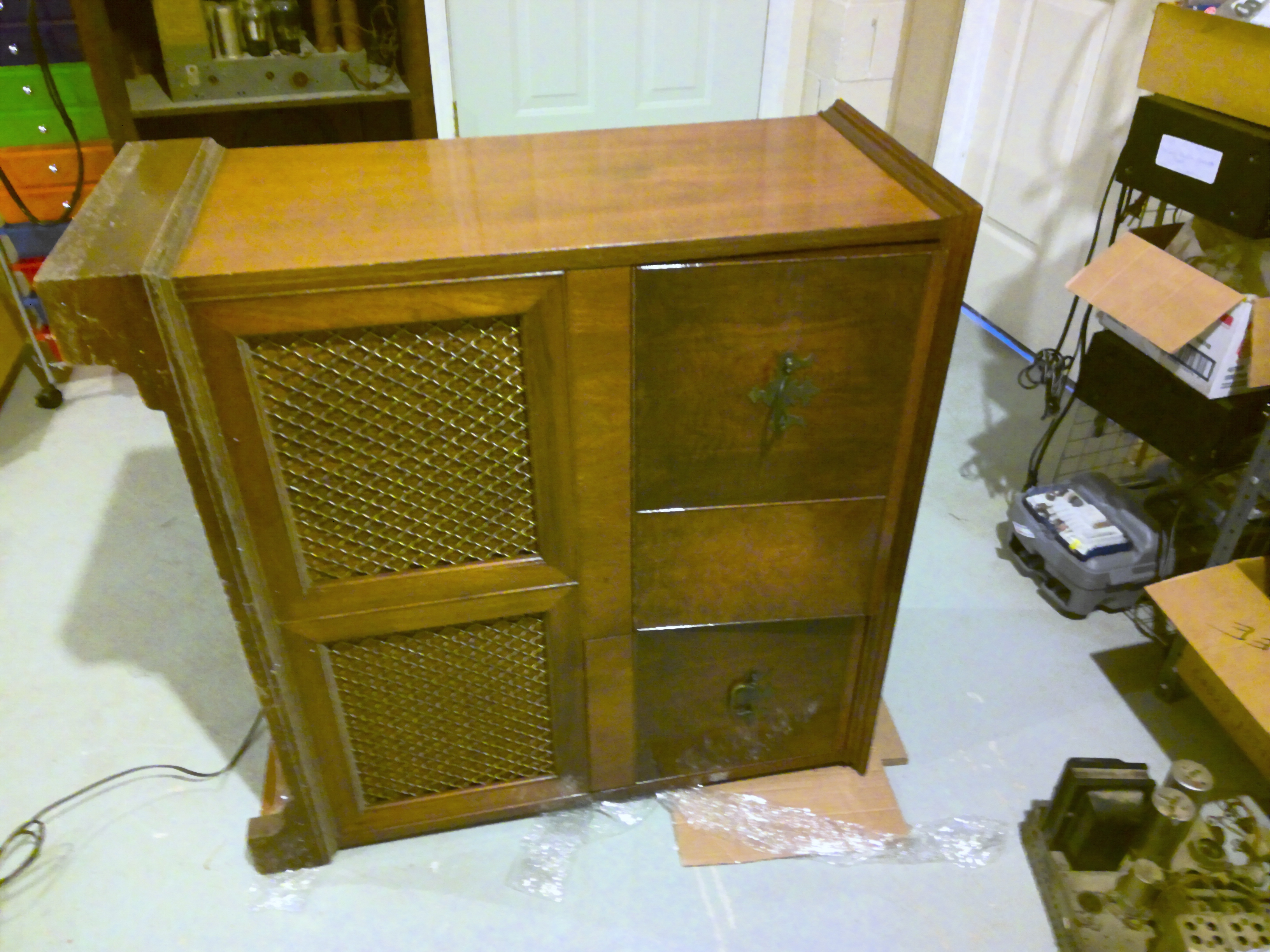
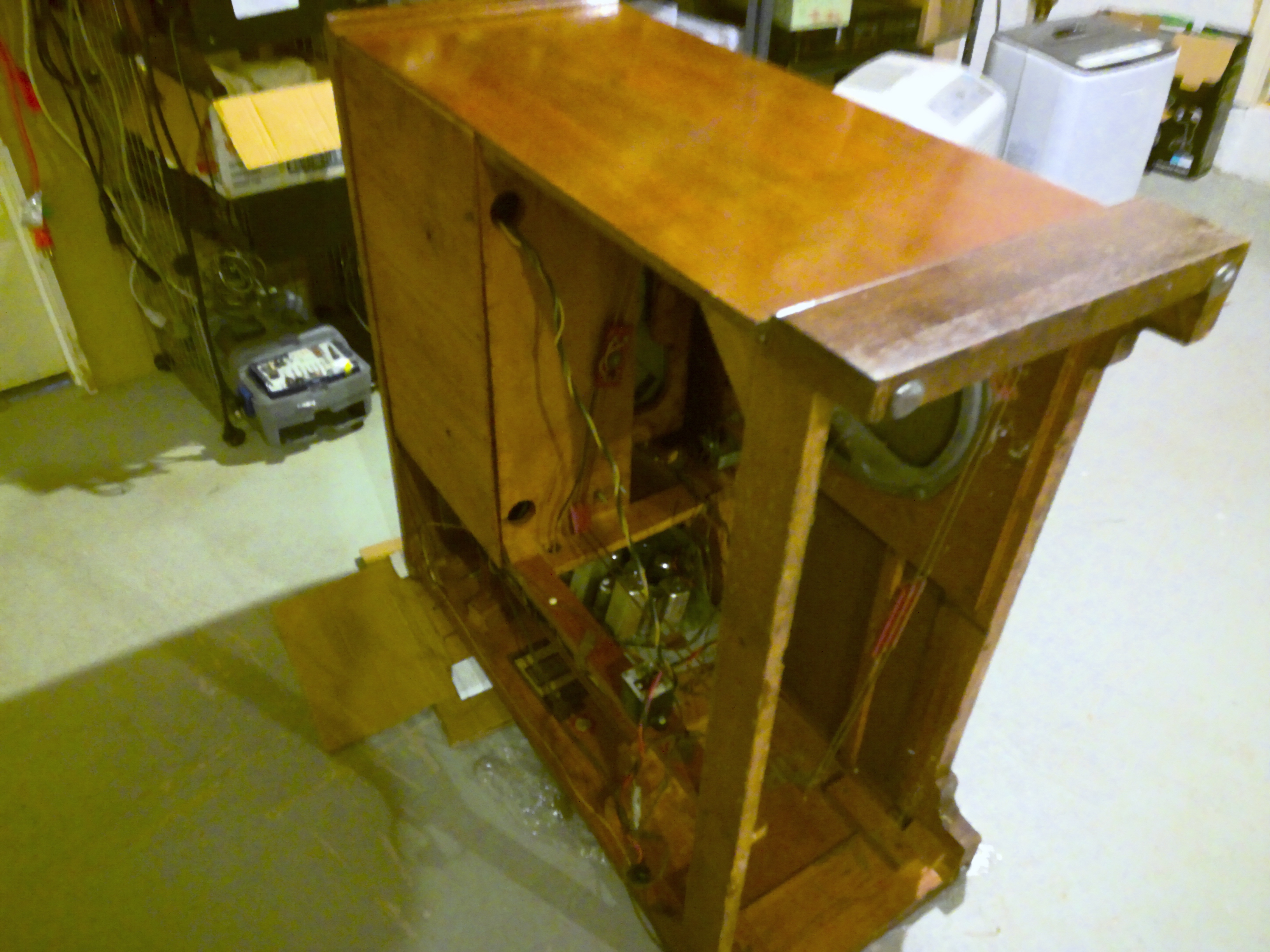
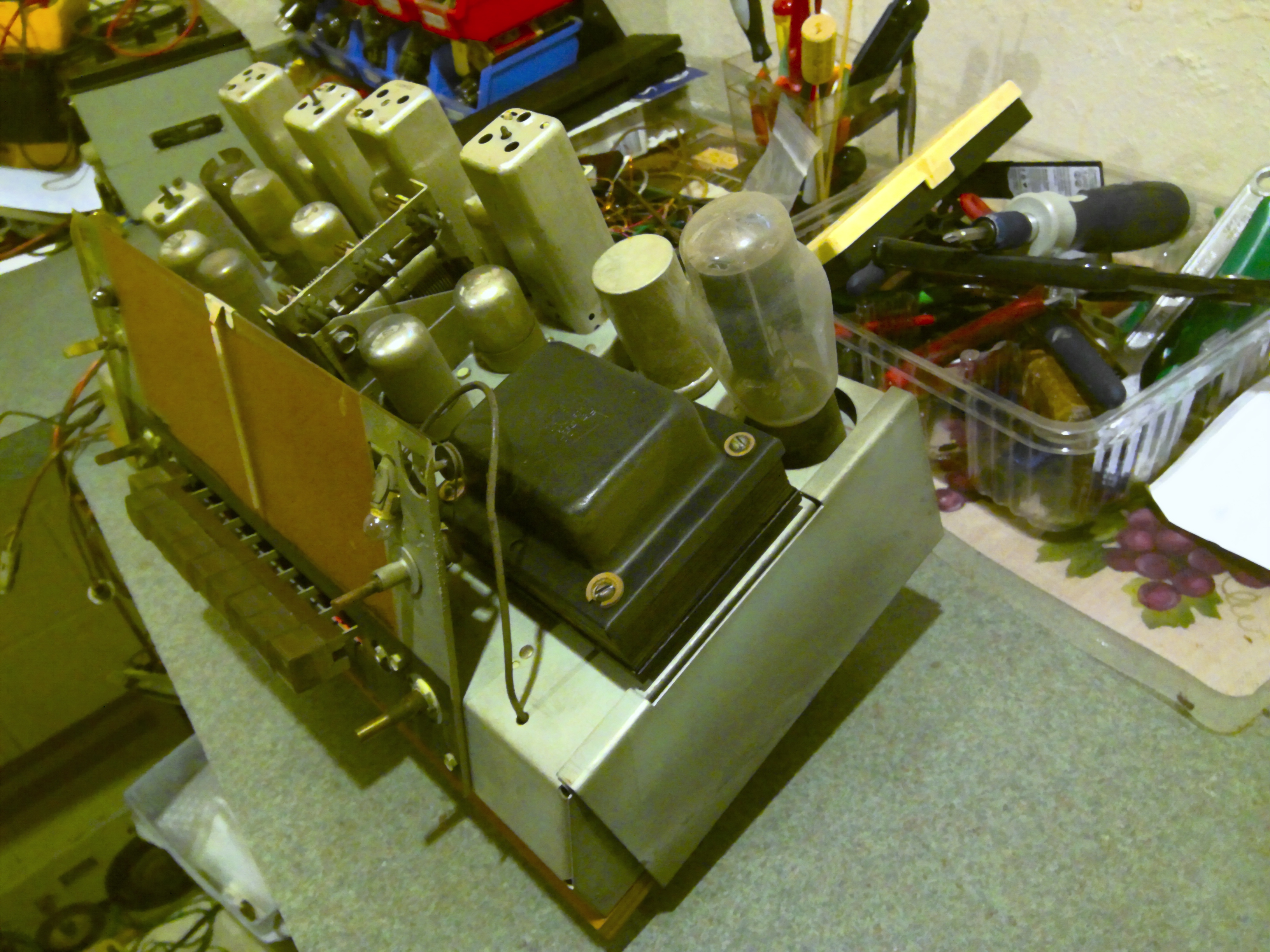
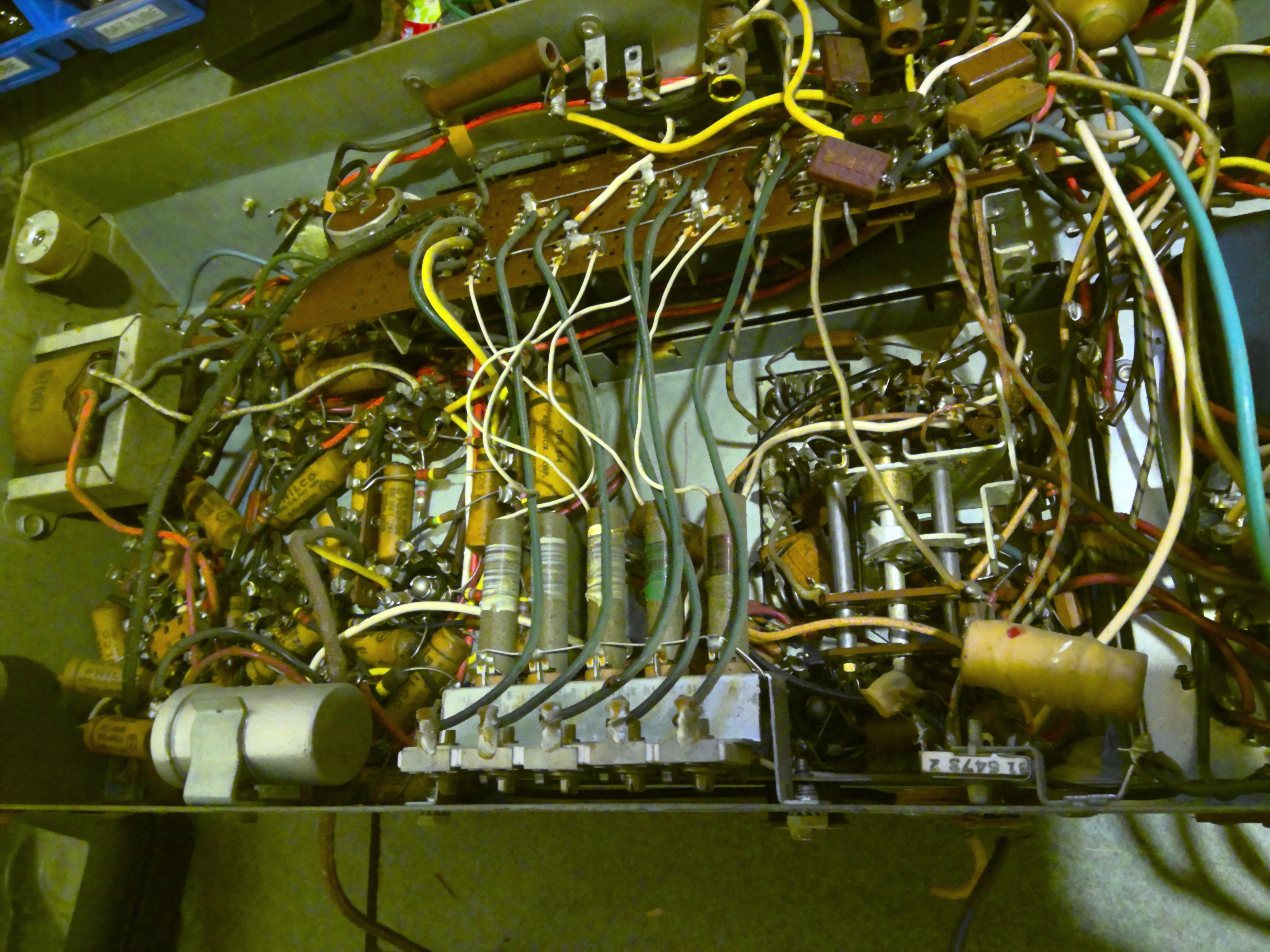
The radio has a load of caps; will take lots of restuffing. If I decide to go for it;
It has a newer cord that is attached by wire nuts inside.
Otherwise no other repairs are obvious.
People who do not drink, do not smoke, do not eat red meat will one day feel really stupid lying there and dying from nothing.
(This post was last modified: 12-27-2020, 08:53 PM by morzh.)
Posts: 7,212
Threads: 266
Joined: Dec 2009
City: Roslyn Pa
You got the model correct? Couldn't find in Riders or the Library. The thingy on the board is a matching transformer of the lo z phono cartridge to hi z grid transformer methinks.
When my pals were reading comic books
I was down in the basement in my dad's
workshop. Perusing his Sam's Photofoacts
Vol 1-50 admiring the old set and trying to
figure out what all those squiggly meant.
Circa 1966
Now I think I've got!
Terry
Posts: 15,307
Threads: 532
Joined: Oct 2011
City: Jackson, NJ
Yeah it is 46-1213 of course. typo.
People who do not drink, do not smoke, do not eat red meat will one day feel really stupid lying there and dying from nothing.
Posts: 7,212
Threads: 266
Joined: Dec 2009
City: Roslyn Pa
Just for grins you might want to test the FM1000 tube it's not a very popular tube.
When my pals were reading comic books
I was down in the basement in my dad's
workshop. Perusing his Sam's Photofoacts
Vol 1-50 admiring the old set and trying to
figure out what all those squiggly meant.
Circa 1966
Now I think I've got!
Terry
(This post was last modified: 12-27-2020, 09:05 PM by Radioroslyn.)
Posts: 15,307
Threads: 532
Joined: Oct 2011
City: Jackson, NJ
Terry
I always test ALL tubes. Before I let them back in the chassis.
It will take me awhile to recap that thing. It has 3 twistlocks. And a load of tubulars.
People who do not drink, do not smoke, do not eat red meat will one day feel really stupid lying there and dying from nothing.
(This post was last modified: 12-27-2020, 09:28 PM by morzh.)
Posts: 176
Threads: 18
Joined: Feb 2014
City: The Motor City,Detroit MI
I like the metal mesh protection over the speaker grille. I have a 1952 Airline model like that. It took radio manufacturers about 15 years to realize the speakers and grilles needed more protection.
(This post was last modified: 12-27-2020, 11:05 PM by Kestas.)
Posts: 15,307
Threads: 532
Joined: Oct 2011
City: Jackson, NJ
Terry
On your advice I checked the FM-1000 tube; it is fully ok.
I also tested the rest; 7F8 has a short and 7AF7, 6SQ7GT and one 6V6GT out of two are weak.
So Bob will probably hear from me.
People who do not drink, do not smoke, do not eat red meat will one day feel really stupid lying there and dying from nothing.
Posts: 15,307
Threads: 532
Joined: Oct 2011
City: Jackson, NJ
I thought Philco stopped using backelite blocks by 40-s some time, but no.....even though it is just one, the AC line filter cap, but they used it there. Flooded eylets too. Hate that.
And it has an RF chassis. I thought they learned some lessons, but again - they decided to use it. I moved it - it it pretty snug and still has some flexing, so I will not be replacing those grommets.
Note sure about the tuning cap: all is very clean, not even much dust. But something puts resistance on moving the dial, and I think it might be that bushing or a clutch or whatever that is that couples the tuning cap with the cord. So I might have to touch that part if I cannot make it rotate smoothly.
Lots and lots of tubular caps. I even thought of skipping the restuffing but then I started doing it. The number of the caps reminds me of that 1940 Zenith Spinet. Way too. Over 30.
People who do not drink, do not smoke, do not eat red meat will one day feel really stupid lying there and dying from nothing.
Posts: 4,612
Threads: 51
Joined: Sep 2008
City: Sandwick, BC, CA
Mike;
I heard that the early Philco TVs are also bad for having a copious number of paper caps, even compared to something like an RCA 630 chassis, I noticed that even their five tube AC/DC sets seem to have more then the average, and inside a cramped chassis too I might add. Whatever they potted those line condenser blocks with doesn't melt easily, so you may be in for a session of drilling, and chipping away the compound to get the old caps out. I think that Philco used them because they were convenient to use as a terminal for the line cord. The dial mechanism is probably stiff due to dried out grease/bearings, so the will probably need repacking.
Regards
Arran
Posts: 15,307
Threads: 532
Joined: Oct 2011
City: Jackson, NJ
Arran
With later backelites it seems to be the case; indeed the tar does not soften as easy. Flooded eyelets do not help.
But there is only one, the line filter: indeed a convenient way to solder the line cord to. So my drilling and chipping hopefully is over with this radio, unless something else gives me the same problem.
The tubular caps seem to be a regular type with grey hard wax (I prefer softer brown one). Because of this yanking the terminal has to be done faster after heating as otherwise before you grab the cap with a piece of paper, after having laid down the heat gun, it is already solidifying. And even after pulling some of it remains inside, already hardened and stuck to the tube.
Not too bad; having enough practice with many hundreds of those I manage that well.
People who do not drink, do not smoke, do not eat red meat will one day feel really stupid lying there and dying from nothing.
Posts: 4,612
Threads: 51
Joined: Sep 2008
City: Sandwick, BC, CA
Mike;
I found that using a toaster oven seems to work a little better then a heat gun sometimes, and you can melt out several caps at a time. Lacquer thinner seems to clean up the hard wax residue as well.
Regards
Arran
Posts: 15,307
Threads: 532
Joined: Oct 2011
City: Jackson, NJ
Arran,
Thanks.
The only problem is, I need a spare toaster oven 
People who do not drink, do not smoke, do not eat red meat will one day feel really stupid lying there and dying from nothing.
Posts: 1,824
Threads: 114
Joined: Jul 2014
City: Sneedville, TN
When removing the potting tar in the bakelite blocks here's what I do. I make a little tray out of aluminum foil, folded to double thickness, and a couple of little rolled props to hold up the block. Make sure the sides of the little tray are about 1/2 inch high so all the tar will stay in the tray. I then put the block on the little props in the tray with the tar side down, and put it in my regular stove oven on a baking sheet or pie plate, with the oven set to 350F. After a while you will find all the tar will have melted out and collected in the little aluminum foil tray. Remove carefully from your oven, and set the drained block on a piece of scrap paper to cool, again, open side down. Then remove the guts and rewire with new guts as per specs. It will stink a bit, but the smell will dissipate.
Posts: 15,307
Threads: 532
Joined: Oct 2011
City: Jackson, NJ
Mike
This can be done without even dirtying your hands and in a matter of minutes. It is described there in sticky articles.
Steve made tools that help though when I wrote it these tools were not available yet.
Sometimes there are especially stubborn ones, particularly the later dates, like end of 30s and 40s where the vial are flooded, but this is rare.
Typically if there is an access on the left and right and you could warm it up in citu without burning things around, which most often is the case, after severing the wires in the eyelets the tar block can be simply pushed out with a blunt rod like an Allen wrench of a diameter that fits through an eyelet.
And for melting things out, I take it, the capacitor has to be disconnected. While I usually do not have to disconnect anything at all.
People who do not drink, do not smoke, do not eat red meat will one day feel really stupid lying there and dying from nothing.
Posts: 15,307
Threads: 532
Joined: Oct 2011
City: Jackson, NJ
While recapping I usually check resistor values. Not always.
This time I bought carbon comp resistors so when having to replace any they'd look right.
Just now decided to check a 470K one.....it was open. Giving me between 5M and 19M.
It is a load of Phono Amp. I am not sure why short of mfr defect or mechanical or ageing failure. 470K will not overheat.
Also the plate power filter for the same amp, the C73 is listed 1uF. However the cap installed is 0.1uF. Seems factory.
And unlike the rest is Aerovox, not Philco.
Unusual. But ok. Good thing I looked.
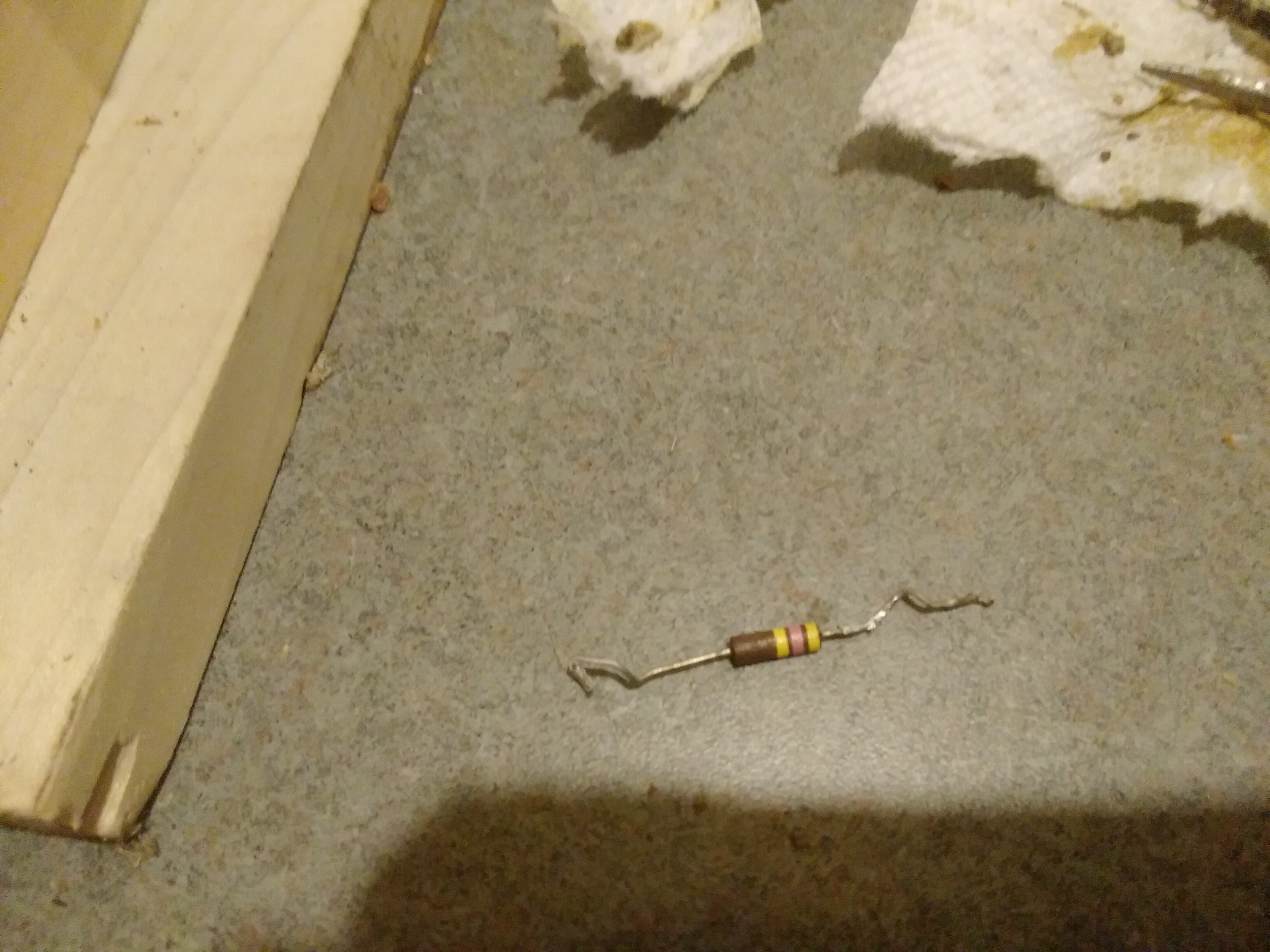
People who do not drink, do not smoke, do not eat red meat will one day feel really stupid lying there and dying from nothing.
Users browsing this thread: 1 Guest(s)
|








